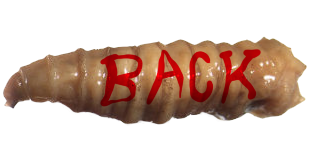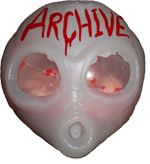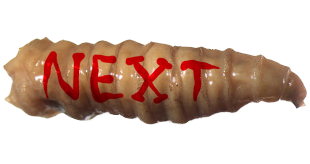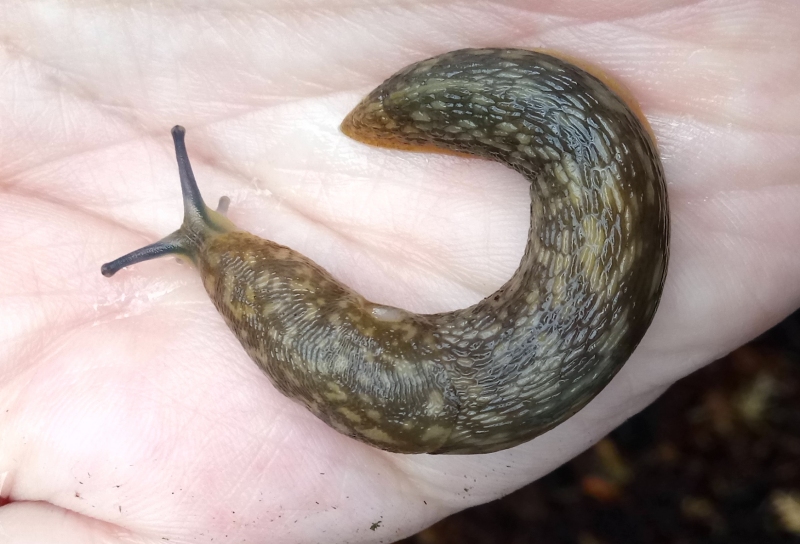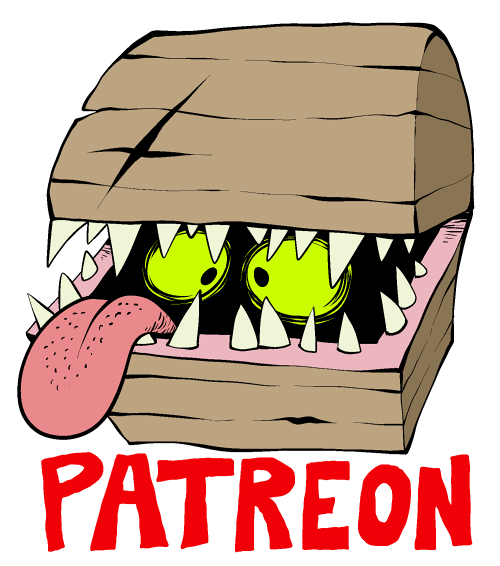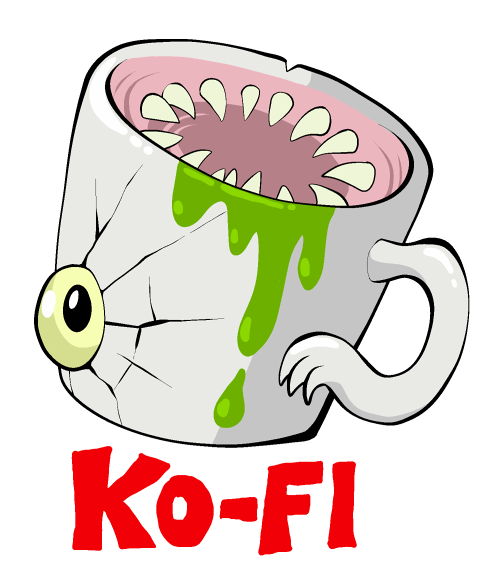Written by Jonathan Wojcik
Nine animals Begging for more Halloween representation
A very long time ago, 2011 in fact, I put up a seasonal list article about real, live organisms I believed made for Halloween icons as perfect or in some cases far more perfect than cats, bats, spiders and rats. This article, by now, is hopelessly broken, built in a long-obsolete web design program before I just hard-coded everything as I still do today, and has at long last been retired completely - replaced now with a redirect to today's entry, which I do hope will be a bigger, better take on the subject and perhaps a companion to my 2015 post on the Halloweenest sea life, though I suppose that was more of a speculative "what if an underwater civilization had Halloween?" I think it might have been one of my weirdest seasonal articles, but that's up to you to decide.
Daubentonia madagascariensis

Anyway, the "aye-aye" was my first pick for the original article, and you should see why immediately. Once mistaken for an arboreal rodent, it is my professional opinion that this highly specialized lemur - a primate like you! Sort of! - looks more like some kind of kooky hobgoblin than literally any other animal on the face of the Earth.
Covered in scraggly, wiry fur that looks mangy no matter how clean it actually is, evolution even saw fit that its otherwise dark body would fade to corpse-pale just when we get to the whole facial area, which looks like you hybridized a vampire bat with what a rat would look like in the mind of someone who has never actually seen a rat. The black-ringed, orange eyeballs would honestly be enough to complete the whole look, but it also had to go and have the longest, boniest fingers of any flightless mammal on our planet, which it tap-tap-taps against the trunks of rotten trees, searching for grubs it drags out with its even more elongated middle digits.
All this is to say, obviously, that there is virtually no furred vertebrate more adorable, more charming, more awash with infectious personality than this scrabbling rat-monkey, one of the most precious and innately lovable of all the critically endangered macrofauna on Earth...but there's also no denying that almost every detail of its appearance and behavior is tailor made for spooking folks. In fact, that's literally one of the reasons the aye-aye is as endangered as it is; not just because outsiders threaten its habitat, but that even the native people of Madagascar find them disquieting, to say the absolute least.

Photo by David Haring
"Mangatambo hita, miseho tsy tsara" - "If the aye-aye is seen, there will be evil." In northern Madagascar, the aye-aye was once so feared as a harbinger of doom that entire villages would be abandoned if one was seen wandering through it. More to the northwest, it was thought that the sight of an aye-aye foretold the death of a villager, and that a baby aye-aye in particular foretold the death of a child. Down south along Madagascar's east coast, the story goes that an aye-aye merely looking at you can make you ill, and an aye-aye pointing at you with its middle finger will doom you to die. There's even a claim by some that the animal can use that finger to pluck out the heart of a sleeping victim, and the only way to banish the curse is to string its dead body or at least its tail upside-down from a wooden signpost, and that has me realizing that even before I thought all that hard about the aye-aye, it was exactly how my mind always pictured Tailypo.
We don't associate aye-ayes with Halloween for the simple reason that Halloween is an American tradition and aye-ayes are a Madagascan animal, but it wouldn't have been far-fetched for stories and even specimens of them to have made their way here and captured our imaginations even centuries ago. I feel like we just narrowly avoided that, and it sucks. It sucks that they aren't forty times more famous everywhere in the world. Heck, if I could choose a single animal to be invasive around the globe, I would have no qualms at all about a world in which people in the middle of Seattle have to chase aye-ayes out of their garbage cans at night.
Phrynosoma

I promise not all of these entires will be quite that long, especially since we're going to continue covering those from the original article, including the 22 known species of horned toad lizard. It's actually more surprising that this one never caught on as a "creepy crawly" in American culture, as a genus endemic to our very own desert environments. Not only are they fat, skittering lizards lined with menacing-looking thorns and spines, but eight species infamously defend themselves by squirting their own blood from their eyes. This was once believed to merely startle predators, and certainly does, but the blood also tastes bitter and unpleasant to mammals such as cats and dogs, possibly due to toxins concentrated from a diet of venomous ants.
I suppose the main reason "horny toads" never made it into Halloween is that, while meeting all the criteria for an animal we might unfairly label "gross" or even cursed in some way, we don't generally think of bright, sunny deserts when we think of ghosts and witches. This hardly seems fair, with so much of North America consisting of desert, and if anything, a moonlit night over towering cacti is even more unsettling than a cozy haunted forest.
Maybe there should have always been a "daytime" side to Halloween. Spooky creatures that like the sun, which is honestly a much more terrifying celestial body than any we can see in the dark. We already think of carrion birds as a Halloween horror animal and those aren't even nocturnal at all. Why do they get a pass? For that matter, so are crows and ravens. The birds we think are the most goth of all possible birds go to bed at night like fakers.
Acherontia

Named after Acheron, a river in Hades, the three known species of "Death's Head" moth include Acherontia atropos, Acherontia lachesis, and the somewhat redundant Acherontia styx, and it's hard to imagine how an insect could ever look any more gothic. Even viewing photographs and videos of these animals just doesn't feel quite real, like they have to be some sort of hammy computer generated effect. No way would a moth ever look that cool, right? Someone made that up for a cheesy ghost movie and had no concept of subtlety!

Source
Found throughout Europe, parts of Africa and sometimes even migrating as far as the British isles, it's no surprise that these animals, too, have inspired superstition wherever they went. Entomologist Moses Harris wrote of their reputation in 1950, saying "It is regarded not as the creation of a benevolent being, but the device of evil spiritsóspirits enemies to manóconceived and fabricated in the dark, and the very shining of its eyes is thought to represent the fiery element whence it is supposed to have proceeded. Flying into their apartments in the evening at times it extinguishes the light; foretelling war, pestilence, hunger, death to man and beast."
Not only do these moths look someone watercolored the grim reaper all over them, but they're one of the only moths capable of emitting sound - a mouselike squeaking when disturbed - and whose five inch long caterpillars primarily defend themselves by biting. Adults also feed on honey at any opportunity, and smell enough like a honeybee that they can sneak right in to hives and drink their fill. Basically everything about Acherontia is exceptionally pernicious for a Lepidopteran, and it's fitting that they had a role in not only The Silence of the Lambs but in the original Dracula by Bram Stoker. There's even anecdotal evidence that they were considered a form commonly taken by vampires in Romania itself, particularly the soul of a vampire that has escaped defeat.
And as a matter of fact...since writing my original 2011 article, I actually have begun to see these moths on Halloween items, sporadically.
Cryptobranchus alleganiensis

Newts and salamanders already have an association with witchcraft, but are conspicuously rare in mainstream, mass-marketed Halloween imagery. Perhaps that's because it's too easy to accidentally stylize a salamander into a lizard, and perhaps because the average person hardly even knows the difference. One North American salamander is kind of unmistakable, however: our very largest on this side of the world, the relatively gigantic "hellbender." Nobody's even quite sure where the common name comes from, but it's been posited that early settlers likened them to the appearance of "a human soul writhing in torment," or even that they were thought to have crawled out of hell themselves. Sometimes also called a "snot otter," these slimy creatures seldom emerge from the water when they can help it, spending most of their lives lying in muck as they wait for fish, frogs or other prey to swim within reach of their huge, suction-feeding mouths.
Scutigera coleoptera

More commonly known as a "house centipede," poor Scutigera is an arthropod even more irrationally maligned than spiders. I've seen people who professionally breed tarantulas, scorpions and even other species of centipede say that they "just can't handle" the sight of these creatures, whose short, pale bodies are held high by seemingly more hair-thin legs than you can ever stop and count - especially not while those legs are a rippling blur of constant motion. They are, of course, fairly harmless to humans, delivering a mildly painful bite only if mishandled and otherwise interested only in hunting cockroaches, silverfish and spiders around the home. Their affinity for our architecture, like so many other cellar-dwelling animals, stems from the fact that they originally evolved for such environments as caves, hollow trees and the burrows of larger animals, where they'd often find no short supply of other prey.
While harmless, shy and quite beneficial to us, I can understand being unnerved by such a fast, pale, surprisingly large arthropod, and if regular centipedes have made it into Halloween imagery, it's really a shame that these still haven't. They're distinct enough to catch the eye, curiosity, and possibly fear of even those completely unfamiliar with them, and their presence as a holiday mascot would make them better known to the masses. Possibly even better known enough that we finally learn the right way to keep them as pets? I've tried, and I know several other people who've tried, and for whatever reason they just plain don't take to being enclosed in anything smaller than an attic or a basement.
Testacella haliotidea and slugs in general
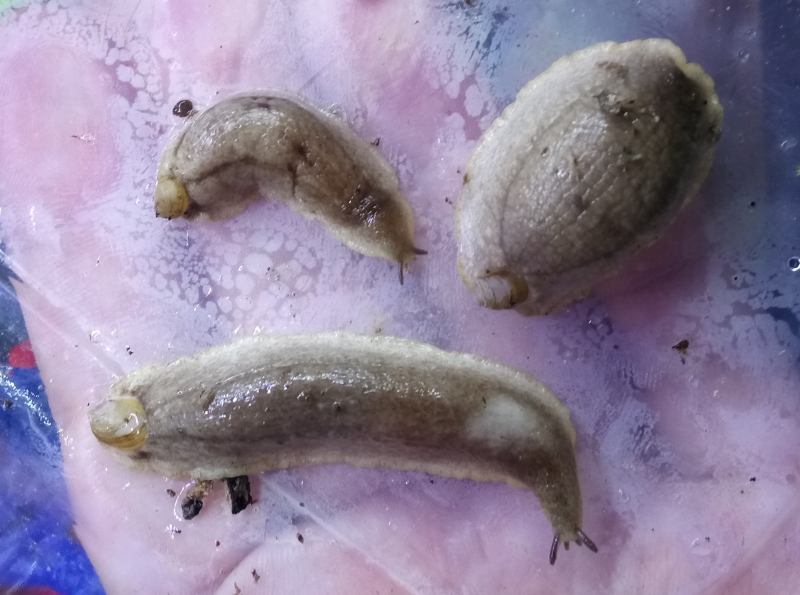
I'm borrowing my own photo from my own article on slugs from a couple years back, which I recommend you read if you've never thought slugs were all that interesting before. Since then, I've continued to find this particular species around Portland, Oregon, but have yet to have any of them really grow or thrive for me in captivity. NUTS! Not even with all the worms they can eat!
Yes, if you weren't aware, this "shelled slug," so called for the little yellow scrap of shell on its rear end, is a carnivore that preys exclusively on earthworms, accidentally introduced around the world along with its prey. They also look remarkably like rotten, severed fingers and they only come up out of the ground on extremely dark, wet nights, so there's a lot about these slugs that reads as a sort of "graveyard denizen." Unfortunately, most people have never seen or even heard that they exist, so it's understandable that they've been left out of our broader popular culture.

Andrew Clemens
Look at that. Tell me that's not instantly recognizable, unforgettable and downright haunting imagery. Why aren't dangling, spiraling, mating slugs something you can just buy as a light-up ornament already?!
Nicrophoridae

Another visitor from my 2011 list, there remains no insect in the world spookier than the nicrophoridae or "burying beetles," even after everything we've said about the death's head moths. If you're new enough around here (or to insects in general) to not know this one, these beetles are so named because they literally bury entire small animals under the ground like tiny little gravediggers, and the goth doesn't stop there. It is generally a single, mated pair who perform this deed, at night of course, after the smell of decaying flesh gets them excited enough to mate right on top of some deceased shrew or field mouse.
The corpse needs to be an animal of just the right size for the pair to take underground in a single night's work, and they will bury themselves along with it. There, the two will spend the remainder of their lives tending to their eggs and larvae with the corpse as the family's sole food source, even chewing meat up to share with the young like a mother bird. Rarely, multiple couples will share a slightly larger body, and don't even differentiate between their own young and those of their housemates, the only beetles known to form communal nurseries in this fashion.
Not only do these beetles have the most morbidly poetic romance in the class Insecta, but they're often seen swarming with tick-like mites who use the beetles as transportation to carrion, where the mites prey on the eggs and larvae of flies, and in flight, the beetles look enough like a bee or wasp that it quite possibly serves as defensive mimicry. Most remarkable of all, however, is that one species - the pustulated burying beetle - has adapted a preference for live snake eggs over dead rodents. While still capable of reproducing the old fashioned way, it will almost always attack a snake nest if it can find one, and can be considered the only insect in the world to exhibit brood parasitism of a vertebrate.
All this, and we hadn't even remarked yet on the fact that they're entire black and orange. Black and orange with an unmistakable "scary face" on their shell. There is NO excuse for us to not plaster these beetles absolutely everywhere they can be fit, each and every single fall.
Laniidae

Nothing about this fat little tweety-bird screams "scary" at first glance, does it? But the name Laniidae basically means "butcher," and these adorable little featherballs are also known by the ominous-sounding "shrike."
As a fairly ordinary looking, even conventionally "cute" animal, it's understandable that nobody caught on to thinking of this one as generally "spooky." Despite this, I think the shrike's markings are distinct enough to remember fairly easily, and what this sweet-looking little bird does is impossible to forget. It wouldn't be that hard to imagine an alternate history where these birds were much more popular in the public consciousness, instantly recognized even on greeting cards or in cartoon shows, and regarded as a weird, monstrous animal even more for the fact that it doesn't look the part at first glance.
Parasitiformes
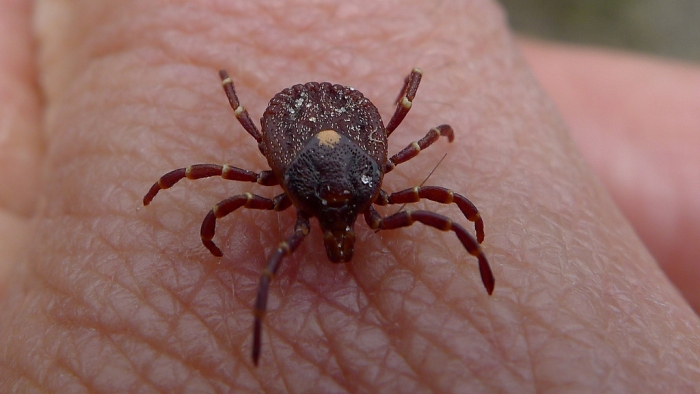
Ticks are another animal I've written extensively about already, which you can check out here if you want to know such things as how exactly they embed themselves in your skin and where their eyes are located (not where you would think). Isn't it surprising, though, how rarely we see ticks in anything? We all know what they are, many of us live or have lived where they're an omnipresent danger, and almost everybody seems to be somewhere between nauseated and mortally terrified of them with far more logical reason than the widespread fear of spiders, AND YET, it's those other arachnids who hog all of the Halloween spotlight.
It seems almost unbelievable to me that ticks aren't more common as horror props and gothic decor. You could argue, as we did with salamanders, that not everyone would recognize one at just a glance, that if you stylize a tick too much you just end up with a cartoon spider, but I for one find them as different as night and day. the flattened, pumpkin-seed shape of a tick and its thickly segmented, curving legs seem unmistakable to me, further distinguished by the often highly unique color patterns from one species to another. These are the true eight-legged "creepy crawlies," literally the only arachnids other than a few of their fellow mites that want to bite you, and that bite can be far, far worse than the venom of any known spider.
MORE HALLOWEEN FEATURES:
